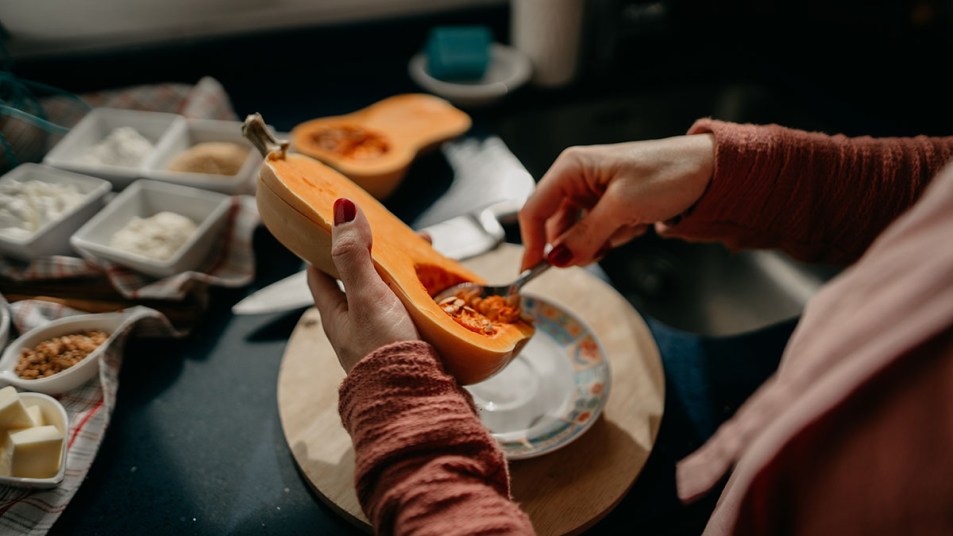Do You Get a Skin Reaction From Butternut Squash or Pumpkin? Here’s What’s Happening and How to Treat It

Butternut squash is a staple ingredient in so many tasty fall and winter dishes. But for some people, handling it can lead to an uncomfortable skin reaction like their palms suddenly becoming red and itchy. If this is you, then you know how unpleasant the feeling is, but do you know what it is?
The condition is called butternut squash dermatitis, and it’s actually not all that uncommon. The internet is full of people asking what’s up with their hands after they’ve come into contact with the squash. For some, their skin turns red and gets really itchy. Others see their skin dry out, while others report seeing a type of thin, sticky film all over their hands. In the worst cases, some reported painful blisters bubbling up. Some people get a combination of symptoms, either way, it’s not fun to deal with.
What is butternut squash dermatitis?
A butternut squash skin reaction was first studied in 1994 when a 30-year-old woman was exposed to the fruit twice and both times suffered blisters on her hands. Interestingly, the reaction only happened when she came into contact with the flesh underneath the skin.
Board-certified dermatologist Morgan Rabach, MD, who talked to Bon Appetite, said the culprit is an unknown compound found in squash. Along with butternut squash, it’s also found in pumpkins, cucumbers, melons, and zucchini. The compound irritates the skin and creates the reaction.
In a 2011 article on the Backyard Gardening blog, a gardener who has experienced the reaction explains that it’s caused by the protective sap some fruits release when they’re wounded. The liquid that comes out when you cut squash, pumpkin and similar fruit is meant to essentially cauterize the area where it was “hurt” and dry it out, forming a layer to protect the fleshy insides. This sap contains an unknown compound that reacts with some people’s skin.
Luckily, the condition tends to clear up after 30 minutes, Rabach told Bon Appetite TK SPELLING AND LINK. And since it’s a contact dermatitis, meaning a tactical allergy, having a skin reaction doesn’t mean you’re allergic to the fruit and can’t consume it. If you’ve eaten butternut squash before without a reaction, you should feel safe to continue doing so. Just try to avoid touching it raw!
How to prevent a butternut squash skin reaction.
In the 1994 study, the woman was given a topical steroid that reduced the inflammation. So if your case is severe, try seeing a doctor as soon as you can to get a prescription. But there’s no need to get to that point!
If your skin reacts to the squash, reach for gloves next time you have to cut it. This will keep your skin safe from the potentially harmful sap. And if you wait until the squash is more ripe, the severity should be much lower since the fruit won’t secrete as much of the mysterious compound.
As always, see your doctor if things get bad. But you don’t have to panic if you have this skin reaction next time you cut some butternut squash!
















